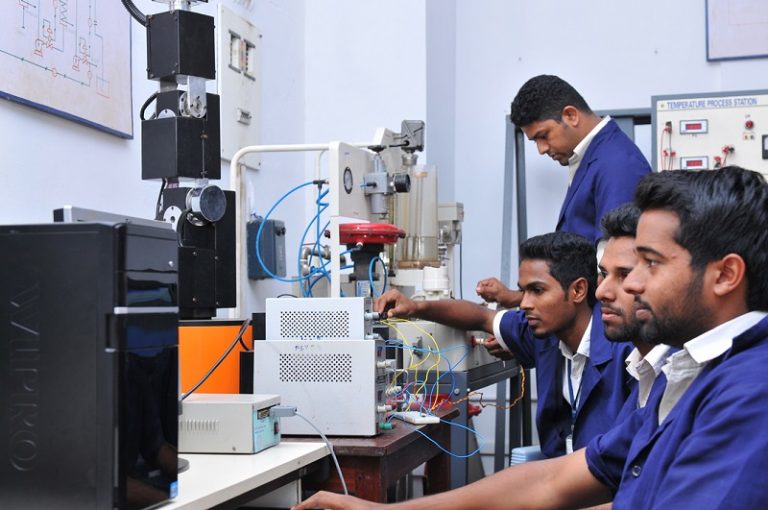As recently at 50 years ago, most creative students who wanted to study art and design at university largely had two options: New York or California. In 1978, a creative educator and entrepreneur changed the game, launching a new art college in Savannah, Georgia, far from the traditional seats of power in creative education, but with a grand vision—to turn higher ed on its head by preparing students for lifetime employment in creative careers. Forty-two years later, the Savannah College of Art and Design, or SCAD, has become the most comprehensive arts university in the world, with three locations in the U.S. and Europe and 100+ degree programs in disciplines as multifarious as architecture, dramatic writing, and visual effects.
Today, SCAD students—through SCADpro, the university’s in-house research consultancy—work directly with companies like Volvo, Google, Uber, Hewlett Packard, and Delta on real-world assignments designed to bring creative thinking to bear on the bottom line of business, resulting in serious skill-building and a staggering 99% employment rate for recent graduates. Behind the success of SCAD is Paula Wallace, a former elementary school teacher in the Atlanta public schools who saw an unmet need in the higher ed market and changed history.
We recently sat down with Wallace to learn how a simple idea—to educate creative students for creative careers—became a best-in-class university with more than 50,000 students and alumni worldwide.
“Before SCAD, I taught arts & gifted education in public schools of Atlanta, my hometown, and I loved it!,” Wallace said. “I thought I’d be doing that forever, honestly. What better job to prepare one to be a university president! A schoolteacher must be all things to all students: educator, parent, nurse, curriculum designer, interior designer (ever seen a third-grade classroom?), ringleader, entertainer, public speaker, external relations master (parent-teacher conferences!).”
The key for Paula Wallace, whether she’s teaching third graders or building #1 ranked graduate programs in interior design, is to seek the best for students. “I have always wanted SCAD students to have best classrooms, resources, curricula, & instruction. That’s been our guiding light.”
In many ways, the idea for SCAD was born long before Wallace’s own career in education began, when she felt something missing in her schooling, where she attended a private four-year college for undergraduate and a public university for her advanced degrees. “I studied education & generally found across board that regard for individual student was lacking. Creativity hardly existed!”
When Wallace entered the profession of teaching, she injected creativity into every subject, inviting students to write, create, draw, sing, perform their assignments, engaging a previously untapped area of thinking that expanded students’ ability to solve problems and create surprising solutions to academic and intellectual challenges.
“The thing is, creative education — especially elevated & professional degree programs offered at SCAD — is about intentionality,” Wallace said. “You build, you invent. There’s purpose to it. You research X, so you can learn Y, so you can make Z. What I saw all around me, when I was a student, was relatively directionless. So, yes, absolutely, I was responding to my own experiences when I created SCAD.”
Intentionality is a watchword at Paula Wallace’s SCAD. You see it when you speak with faculty, staff, even students. “Everything is designed with mission in mind,” Wallace said. That mission reads as follows: SCAD prepares talented students for creative professions through engaged teaching and learning in a positively oriented university environment.
“The mission guides everything with intention,” Wallace said. “A liberal arts education can meaningful (SCAD teaches history, philosophy, political science, too), but here, those subjects and everything else cohere into a purposeful curriculum designed to launch a specific career with specific, highly specialized demands.”
At the heart of SCAD’s success are its degree programs, the distinctive, professionally oriented creative curriculum that prepares students to lead in their future careers. When Wallace speaks of this curriculum, she lights up the room. “I am deeply proud of all degree programs we have created in my 42 years at SCAD. I created the first SCAD catalog practically ex nihilo! These are degrees that extend into the future, from our very first degrees in preservation design to new degrees in immersive reality (think AR/VR), the business of beauty and fragrance, and social strategy and management.”
That’s another word you hear a lot at SCAD: first. “We’re a university of firsts: the first B.F.A. and M.F.A. degrees in visual effects, motion media, the first M.F.A. in sequential art, and much more.”
It’s no surprise, given Wallace’s own background in the science of teaching and learning, that she has cultivated a community of assessment, measurement, and results at SCAD. The ultimate yardstick of success at SCAD is the alumni employment rate. If the curriculum is designed to launch careers, then one must ask: Are SCAD grads landing jobs when they graduate?
“I’m also proud of our alumni’s 99 percent employment rate. Our mission is to prepare students for professions, and that statistic proves that we do what we say. That’s meaningful. It’s not just talk,” Wallace said. “That 99 percent figure means improved lives, families, communities, productive people doing good work in the world. SCAD touches so many lives. Marriages are made here. Students recruit their siblings. Students start businesses with their classmates and end up hiring their parents, just like I did. SCAD touches entire families!”
When you visit a SCAD campus—their largest and oldest campus is located in Savannah, with a fast-growing second U.S. campus in Atlanta—what you notice first are the buildings. Whatever magic SCAD has created in the world, much of it lives in the buildings themselves, which are simultaneously historic and contemporary, old and new.
“A university for creative has to be beautiful, inspiring, filled with art,” Wallace said. “Our students benefit from the history, too. It was Jane Jacobs who said new ideas need old buildings. There’s something about the history of SCAD buildings, most of which originally had an industrial or some other, non-educational purpose, that imparts a lesson on the necessity of change and adaptation to new ideas, new eras.”
SCAD buildings in Savannah, Atlanta, and Lacoste, France (where the university operates a permanent study-abroad location), served as former armories, factories, power stations, inns, dry goods warehouses, synagogues, schoolhouses, private residences, and more. “Consider resurrection and rebirth of Central of Georgia railroad sheds (oldest extant depot in nation, by the way) into what is now SCAD Museum of Art,” Wallace said. “This property was ruin with barely a wall remaining. We wanted to keep that wall, which represented the history of the enslaved peoples who built it, many of whom escaped to freedom from that very depot. I felt an obligation to preserve what we could of the old sheds.”
Paula Wallace shared the unique challenge of adapting historic buildings to a contemporary educational purpose: “And of course, with a museum, you have to create an anti-humidity, anti-desiccant envelope. We analyzed the mortar holding together the historic Savannah gray brick and recreated that exact chemical compound, repointing and replacing missing mortar. You’re both preserving a ruin and building something new within its footprint.” Her favorite part, Wallace explained, is “the creative challenge of designing within the discipline of the footprint.”
At every turn and around every corner, it’s clear that SCAD students, regardless of discipline, from writing and fashion to film and animation, are immersed in design excellence and vibrant works of art at turn: color, line, texture. “Even when they are walking to class,” Wallace said, “they’re absorbing an ethos of good design. They’re entering professional environments when they leave SCAD, so we want them to experience professional environments here.”
The most satisfying part of her role with SCAD, across 42 years, she said, is the personal nature of the work. “It’s very intimate work, ” she said. “I have privilege of engaging in individual students’ lives, helping them find dreams & transform those dreams into productive & rewarding careers. It’s powerful to see what goodness can be made in the world through caring about each individual student and professor, each member of the SCAD team. I receive many heartfelt notes and emails and Instagram DMs from parents who are so grateful to SCAD. I get highly sentimental when I think about it.”
In the end, she returns to the vision that launched SCAD: the desire to give creative students an opportunity to pursue a rewarding, established profession with their talents. “The 99% employment rate of SCAD alumni is evidence that we make good on our promise to students to prepare them for careers,” Wallace said. “This stunning success is fruit of our hiring hardest-working faculty, evolving perfect degree programs for this time in history, & providing most professionally-minded learning resources & environments at any university this side of Oz. All to create student success. Too many universities treasure exclusivity. SCAD celebrates inclusivity, where every student matters, where every dreamer is given wings to fly. To see that dreaming happen in real-time is a miracle, and that’s how I’ve spent my days for 40 years now. Pinch me.”














